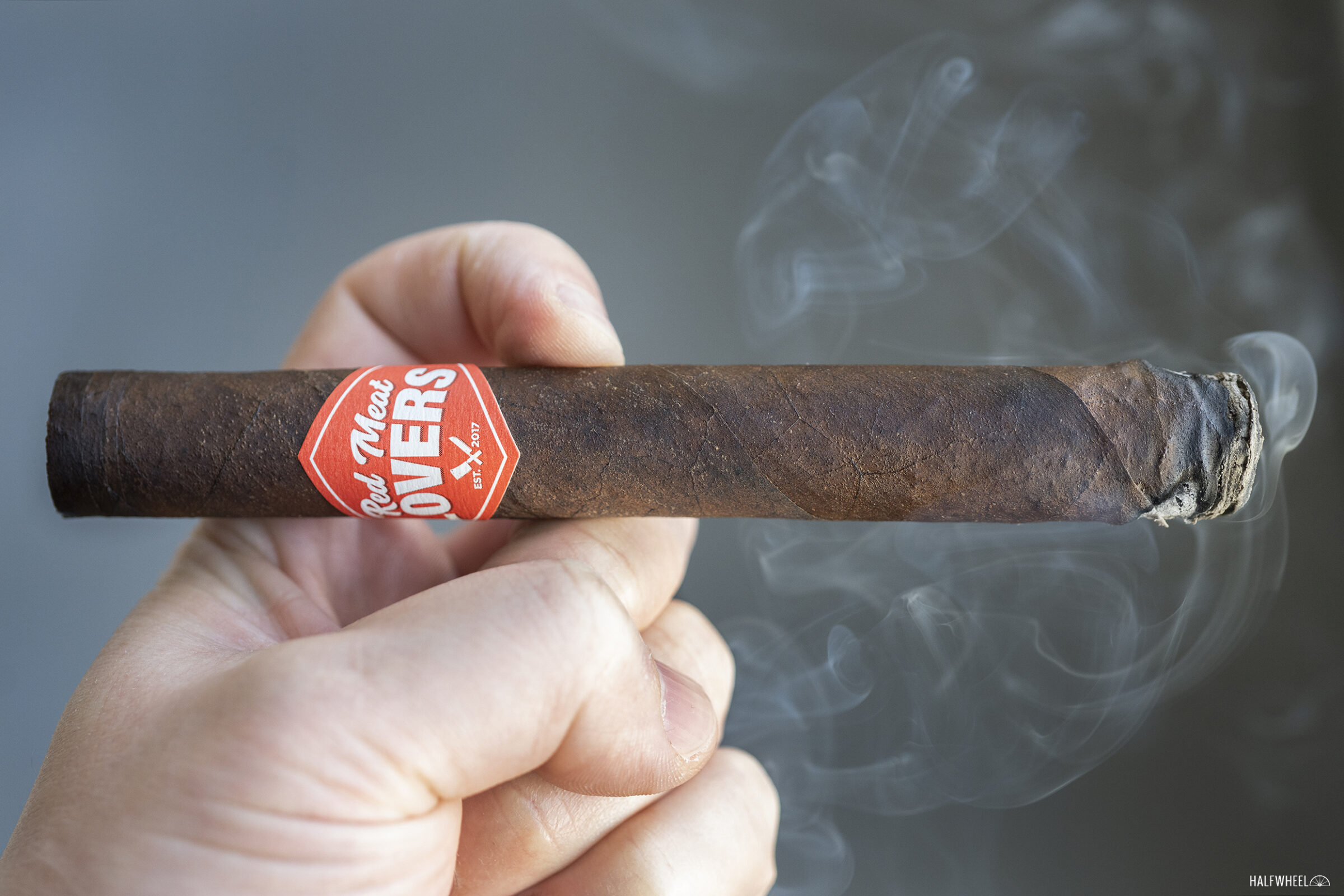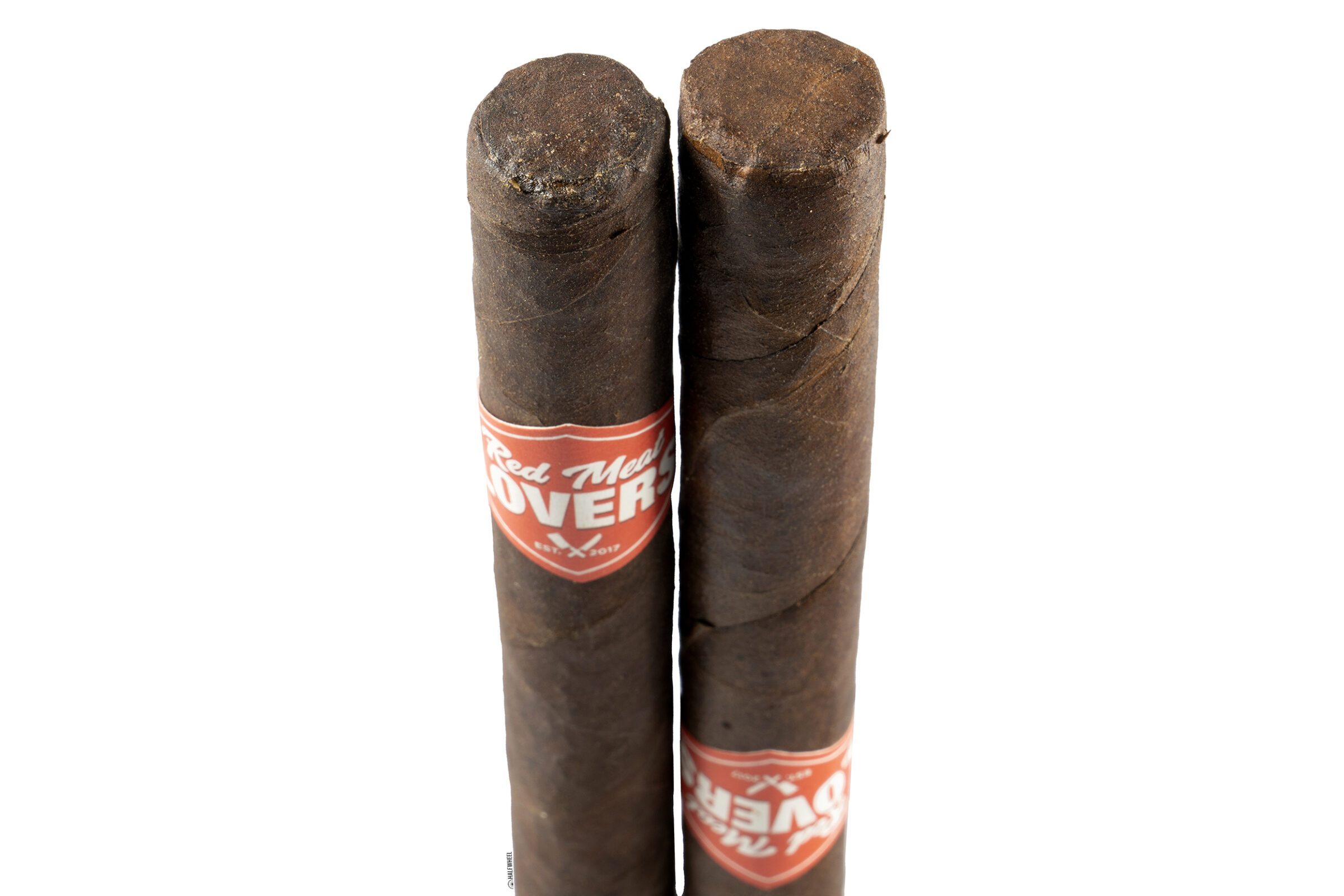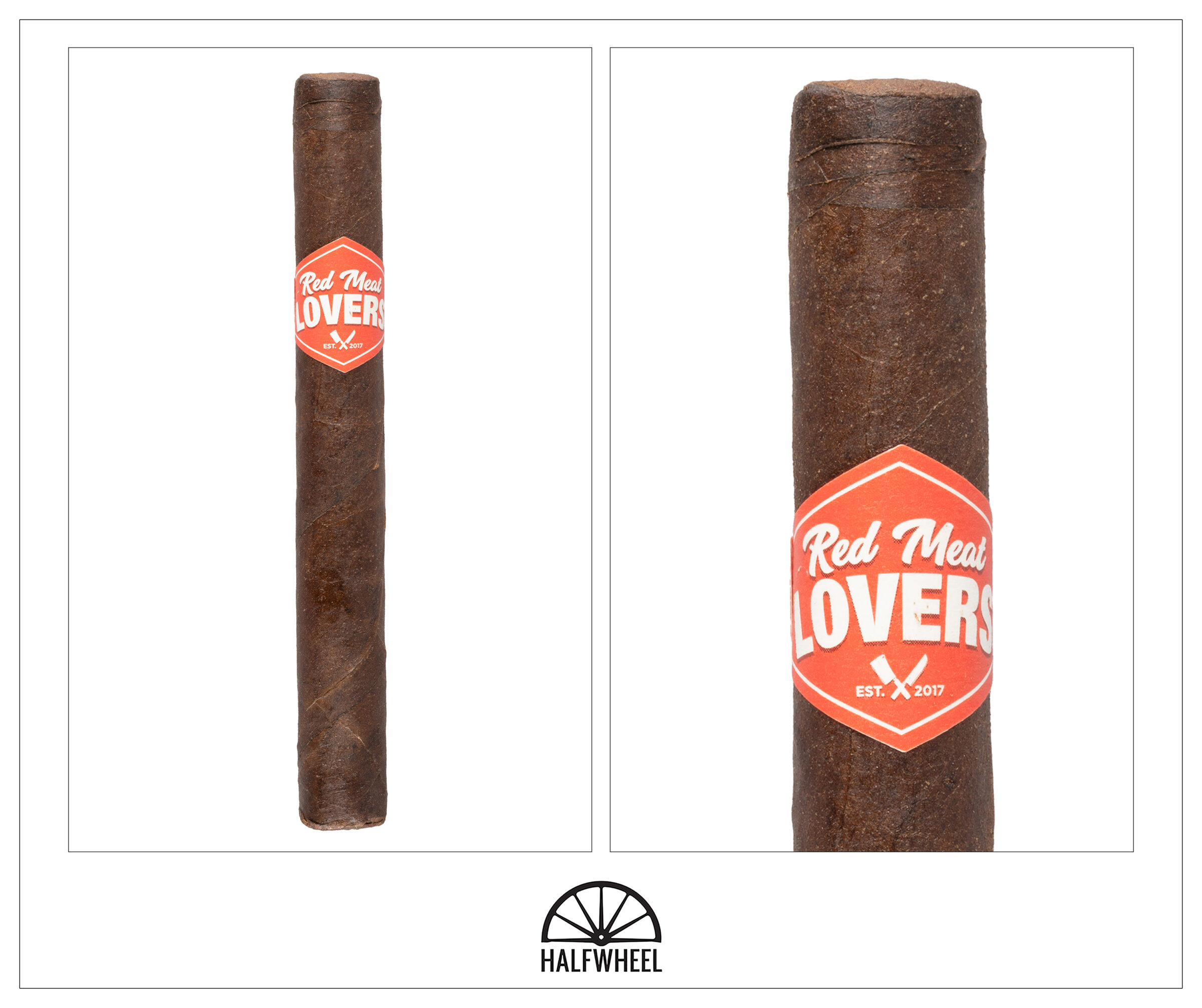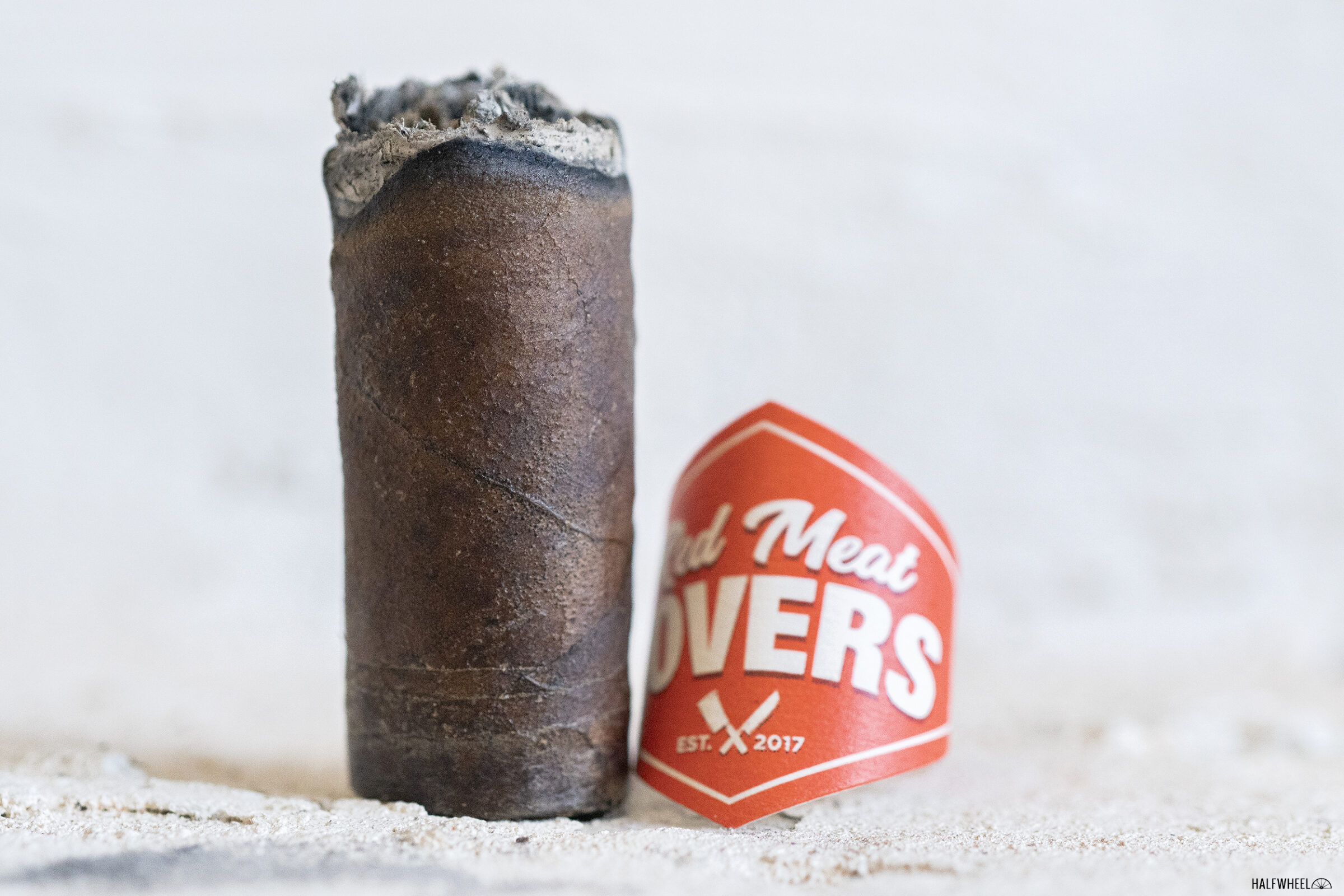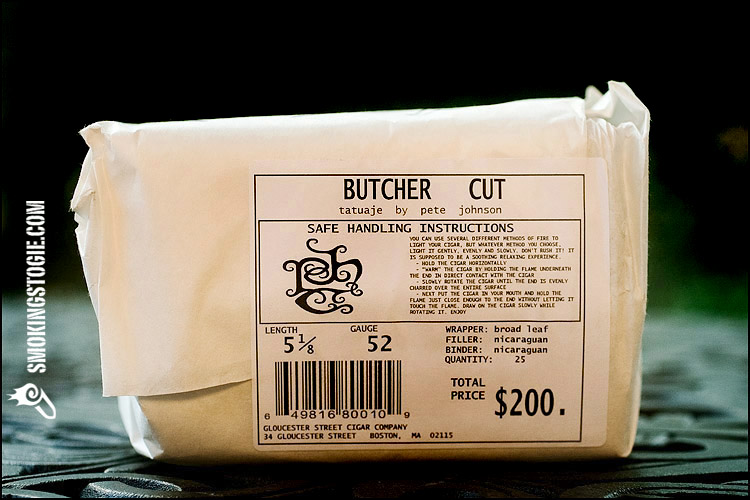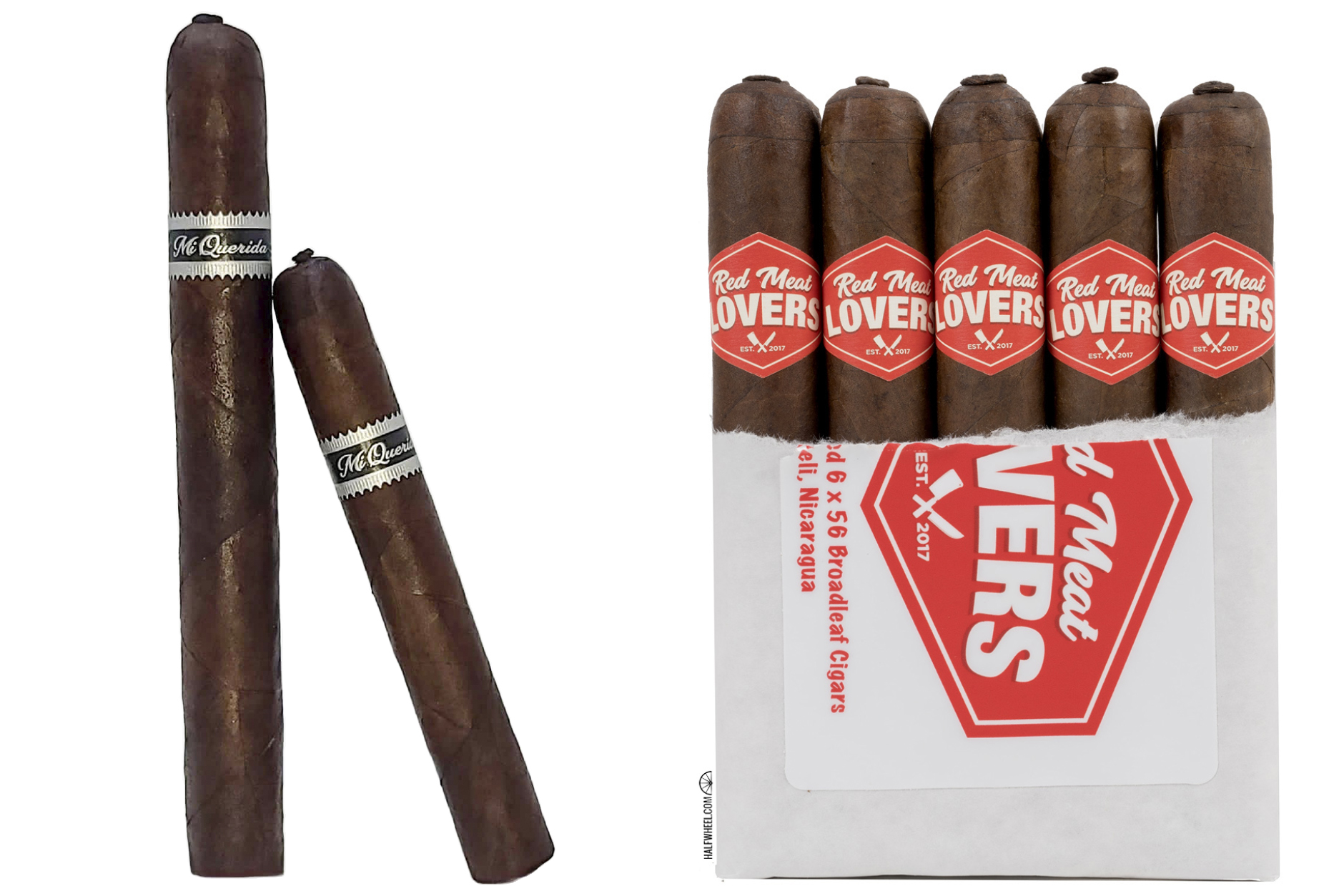Few retailers, if any, have been as prolific with having a diverse group of cigar companies produce limited edition private label cigars as Smoke Inn, the South Florida-based retailer. Furthermore, so many of those cigars have gone on to become something larger than just a single shipment sold by one retailer.
Smoke Inn is where the first version of a 6 x 60 Padrón 1964 debuted before eventually becoming a pair of cigars sold to retailers around the world. Smoke Inn was also the place where Padrón’s black-banded line of cigars first appeared, now cigars that have been offered to other stores and included in Cigar Rights of America Freedom Samplers. Then there’s the Tatuaje Anarchy, which started as one of the more interesting Tatuaje single store releases—who remembers the circa 2010 video of the car getting destroyed?—and a decade later spawned an NFT.
One of the more recent cigars to graduate from a Smoke Inn private label to a national line comes from Dunbarton Tobacco & Trust: Red Meat Lovers.
It started in 2019 with a single 6 x 56 toro extra that was released as a collaboration between Smoke Inn, Dunbarton Tobacco & Trust and Red Meat Lovers Club, an organization that gathers for meat-centric events with a charitable aim. A year later, a second size—6 x 52—was added, again sold exclusively through Smoke Inn.
Earlier this year, Dunbarton Tobacco & Trust added Red Meat Lovers to its regular production portfolio with four sizes, all named after beef:
- Red Meat Lovers Beef Stick (6 x 48) — $15.45 (Box of 10, $154.50)
- Red Meat Lovers Filet Mignon (5 x 54) — $14.95 (Box of 10, $149.50)
- Red Meat Lovers Ribeye (6 x 52) — $15.45 (Box of 10, $154.50)
- Red Meat Lovers Porterhouse (6 x 60) — $16.45 (Box of 10, $164.50)
The blend was created to be paired with beef. That meant taking a Connecticut broadleaf wrapper and placing it above a Mexican San Andrés negro binder with fillers from Nicaragua and Pennsylvania.
“Cigars and steaks go hand in hand, but to my knowledge, no one has ever actually developed a blend specifically created to be enjoyed intentionally together as a ‘pairing,’” said Steve Saka, founder of Dunbarton Tobacco & Trust, in a press release when the original cigar was announced in 2019. “You would think this would be a rather straightforward task, but I took the responsibility very seriously in the selection of the various tobaccos to best compliment the hearty nature of the beef.”
While the Filet Mignon, Ribeye and Porterhouse vitolas would’t raise your eyebrows as much as they might trigger your stomach growling, the Beef Stick cigar is decidedly different. Not just different than the other three sizes in the line, it’s visually different than any cigar I can recall seeing. Not only does it a have a flat cap, similar to RoMa Craft Tobac’s Neanderthal line. It actually has a second flat cap on the foot, meaning the cigar’s cylinder is entirely closed.
- Cigar Reviewed: Red Meat Lovers Beef Stick
- Country of Origin: Nicaragua
- Factory: Nicaragua American Cigars S.A.
- Wrapper: U.S.A. (Connecticut Broadleaf)
- Binder: Mexico (San Andrés)
- Filler: Nicaragua & U.S.A. (Pennsylvania)
- Length: 6 Inches
- Ring Gauge: 48
- Vitola: Toro
- MSRP: $15.45 (Box of 10, $154.50)
- Release Date: July 2023
- Number of Cigars Released: Regular Production
- Number of Cigars Smoked For Review: 3
It seems quite clear that the goal was to make the shape of this cigar look like a Slim Jim or a similar type of beef stick. Mission accomplished. It’s been a minute since I had a Slim Jim, but the cigar’s appearance does a great job at mimicking one. The flat caps are similar to the beef product and the fact that the cylinder and the ends of the cylinder have the same texture only further reinforces this point. If you are wondering how close it actually looks to a Slim Jim, the cigar’s wrapper appears far darker and with less reds than the food product. The aromas from two cigars’ wrappers have some sort of artificial smoky flavor—reminding me a bit of Trader Joe’s South African Smoke Seasoning Blend—which then triggers a reminder of meatiness, no doubt in part due to the name. However, the first of the three cigars is different, instead reminding me a bit of the taste of pasta water with some pita bread flavors in there as well. That first cigar is medium-plus, while the two smoky cigars have more of a full aroma. The feet tend to be less intense versions of the wrapper aroma, which makes sense, given it’s fully covered. I grab my Fox Knives 749 Cigar Cutter to mimic the way RoMa Craft Tobac’s Skip Martin recommends cutting the flat cap of the Neanderthal: cutting just the very top flat part off. I’m able to do that without any unraveling issues on the three cigars, but the cold draws still end up being peculiar. Due to the completely covered foot, the first and third cigars have zero airflow. Oddly, the second cigar not only has some airflow—perhaps there’s a loose seam somewhere—but a draw that is only slightly tight. Flavor-wise, the three cigars’ cold draws are all over the place. Sharp ketchup and raisins lead woodiness on one cigar; milk chocolate, earthiness, sugar, barnyard and acidity mix on the second cigar; while the third cigar has roasted nuttiness and milk chocolate. Intensity-wise, the cold draws are medium-plus, medium-full and medium.
Predictably, the extreme tightness of the draw loosens substantially once the bottom of the cigar is lit. Unfortunately, two of the three cigars still end up with bad draws. The first cigar ends up being a bit too open, while the third cigar clearly has an issue, causing a very tight draw. Flavor-wise, the profile starts with gritty wood and earthiness accented by barnyard, sweetness—one cigar a frosted donut-like sensation, another cigar more of a sweet orange—and then cocoa powder and roasted flavors. As the finish develops, toastiness and chocolate take control. All three cigars start medium-full in intensity. Roasted woodiness—typically the sweeter Spanish cedar-like flavor—and toastiness lead the dance for most of the three cigars. Beyond that—and sporadic doses of sugary sweetness—there’s not a ton of consistency between the three cigars. The composite list of secondary notes that appear more than once includes woodiness, milk chocolate, acidity, bread and sweetened coffee flavors. As inconsistent as the flavors in the mouth can be, retrohales are remarkably consistent. Nuttiness and cocoa lead some more of that sugary sweetness. If I take too many retrohales consecutively, there’s a risk of some toasty metallic flavors emerging, but it’s not every time. All three cigars show a distinct gyro meat-like flavor on the finish, joined by woods, minerals, and some bitter herbs. Flavor tends to be medium-full or full, body is medium-plus and strength is medium. I’m pretty sure a large reason for the flavor inconsistency is due to the draws, especially with the third cigar. I find a hard knot in the cigar above the band, a blockage that isn’t at the plugged range but is too tight for my liking. For reasons that I don’t understand, the other two cigars have draws that are getting slightly tighter as the cigar burns down. I look to see if there’s any tar or any other visible developments—I don’t see any—and as such, I’m led to believe the causes are probably internal. As flawed as the draws might be, combustion tends to be quite good. Only one cigar needs a touch-up, while the ash formation on the other two cigars is incredibly even. All three cigars seem great candidates for a longest ash contest.
While not the strongest flavor in the second third of the Red Meat Lovers Beef Stick, the defining flavor is this vivid pretzel exterior flavor. If you’ve ever stuck a pretzel in your mouth and just let it slowly dissolve, that type of flavor is oftentimes accenting much of what’s going on in the second third. In general, all three cigars are on a trajectory toward becoming more toasted and roasted. An underlying mild sweetness helps balance out the secondary flavors, which include minerals, coffee beans, dry bread, sunflower seeds and black pepper. In very general terms, the finish is a dry nuttiness but if I take a dry swallow, it seems to light up black pepper in my throat. Retrohales are extremely bright, sometimes led by a dose of sugar and other times with sesame seeds, oak or creaminess. That creaminess gets stronger as the finish develops, but too often, it leads to an uptick in bitterness. Flavor is full, body is medium-full and strength is medium-full. All three cigars continue to have their draws tighten, which is a nice development on the second cigar but problematic on the first and especially the third cigar, which don’t need tighter draws. Two cigars need some help with the burn, but those are mild concerns compared to the puff-to-puff issues with the draw.
By the start of the final third, toastiness is the leading flavor of all three cigars. The first cigar has nuttiness, some bright lavender and creamy cashews—each flavor adding itself to the mixture one at a time over the course of six or seven seconds. The other two have a more generic nuttiness with saltiness and some salami-like oily meat flavor. Unfortunately, I oftentimes find the finish to have more bitter and metallic accents, substantially more than at any point of the cigar, though far from overwhelming. Some puffs avoid both of those qualities, which leads to an interesting melody of toastiness sitting on top of some funky earthiness. While the mouth flavor is fine, it’s nowhere near as good as the retrohale on two cigars. Interesting and unique flavors like pineapple acidity, sesame seed and some more of that pretzel mix with earthiness, woodiness and some salty aspects. It’s also an incredibly dense delivery, almost like someone double the thickness of the flavors. They tend to finish with a very concentrated mineral toastiness that reminds me a bit of peat and some of that lavender flavor from before. The overall effect produces a noticeable uptick in salivation. Flavor is medium-full to full, body is anywhere from medium-plus to full and strength is medium-plus. Part of the reason for those wide ranges is that the smoke production on the final cigar is dramatically worse than the other two, making it very difficult to retrohale much smoke. As I get closer to the knot, things get worse and eventually, that cigar has had enough. The other two also have tightening draws, and two cigars require regular touch-ups to help with combustion.
Final Notes
- I initially thought that both ends of this cigar were cut or left open.
- While there aren’t that many cigars there capped on both ends, this is the third different cigar I’ve reviewed this month that has been capped at both the head and the foot. The other two were the Viaje C-4 and Sixty by Rocky Patel Bala.
- The Beef Stick differs from those two cigars in a number of different ways, but the most prominent to me is that it does not have a small hole poked into the foot. The other two cigars do, something that is done to help release moisture and aroma after the cigars are rolled.
- Steve Saka told me that the Beef Stick is rolled without the caps applied, placed in the aging room and then the caps are applied once the cigars are ready to go to packaging, hence why the holes aren’t necessary.
- I don’t think this process would explain my issues with the draws. While I’m not a cigar roller, I don’t think that any part of the buncher’s job would be any different because the caps aren’t being applied. That would only apply to the roller and even that isn’t all that different. Once the roller takes the cigar out of the press to apply the wrapper, the wrapper leaf is placed on the outside of the cigar and wrapped around the cigar. After that process, the cap is applied with some of the leftover tobacco. In this case, the roller would stop before the final step of their process, delaying it until a later date but not changing any of the steps in the basic process up until that point.
- I certainly don’t think the caps would have anything to do with the third’s cigar knot.
- This unique appearance puts the cigar in the category of cigars that I don’t think a highly informed cigar smoker—like a cigar reviewer—could review in a blind tasting. To my knowledge, there’s no other cigar on the market that looks like this.
- The dual flat caps means that this cigar can stand up straight from either end, something that’s a unique feature.
- The first Red Meat Lovers cigar came wrapped in paper like a few steaks from a butcher. Tatuaje did this concept with the Pork Tenderloin and subsequent variations, as well as with its Lomo de Cerdo that came out in 2023. The 2023 version of Red Meat Lovers comes in wooden boxes.
- More so than most, this site has been extremely sensitive to cigar companies using packaging with food or toy items that would be deemed as “marketing to children.” I do wonder how much a product like this would concern the FDA. It’s clearly not a Slim Jim, but the concept is obvious. It doesn’t cross my line of demarcation as being an issue, but it’s not as cut and dry as pretty much every other cigar in the humidor. I think so long as the packaging doesn’t mimic a Slim Jim, this is probably a non-issue for the FDA.
- I smoked the original Red Meat Lovers cigar, one that was sold exclusively through Smoke Inn. That cigar was much better than any of the three Beef Sticks. I’ve not yet smoked the other regular production sizes.
- If you like cigars and meat—especially together—I’d recommend going to a Red Meat Lovers Club cigar event. I went to one here in Dallas, and it was a feast.
- One of the reasons why it was so enjoyable was Evan Darnell. He is Red Meat Lovers Club’s “Commander in Beef,” i.e. the president of the club, and there are few people I’ve ever met that seem as good at hosting a party as Darnell. He’s the type of person that is going to walk up to every single table, introduce himself, learn something about the people at the table and then make sure you are having fun (and food.) And then he’s going to check in a half hour later to make sure that you are having fun (and food.) His level of energy and enthusiasm for these events are qualities I doubt I will ever possess but certainly admire.
- All three cigars felt quite firm but not rock hard. But the third cigar’s knot above the band was something that I don’t think would have passed quality control at most factories. Even for factories that claim to hand inspect every cigar for these sorts of issues, I suspect the location of the issue—very high up on the cigar—might have caused this one to be missed.
- The second cigar I measured—not sure which order it was smoked in—struggled a bit to get out of the cellophane. It measured 49 ring gauge compared to a 47 and 48 ring gauge for the other two cigars.
- I like the design on the sides of the band; it looks like it would be seen on the outside of a ranch.
- Dunbarton Tobacco & Trust advertises on halfwheel.
- Cigars for this review were purchased by halfwheel.
- The first cigar burned super slow, as at an hour and 45 minutes into the cigar, I was barely halfway through it. Final smoking time ended up ranging wildly from two hours to three hours, depending on the cigar and how long I wanted to smoke it down. The cigars with tighter draws burned much slower than the cigar that had the looser draw.
- Site sponsors Atlantic Cigar Co., Cigar Hustler, Cigars Direct, Corona Cigar Co., Famous Smoke Shop and JR Cigar carry the Red Meat Lovers Beef Stick.
Anytime I end up smoking three cigars that have draw issues on both sides of the spectrum, it’s very tough for me to be confident that what I experienced is what I was supposed to be experiencing. I know the cigar I smoked—the one that finished nearly plugged—was not what I was supposed to experience. As for whether the first cigar or the second cigar was what the Beef Stick was designed to be, I don't have a clue. I think it's equally as possible that Saka intended something completely different. None of the cigars tasted bad, but the stars never aligned in a way where I thought one cigar was performing to the best of its abilities construction-wise, which has to affect flavor. There are very few companies—probably a handful—that have consistently put out cigars as good as Dunbarton Tobacco & Trust during the last five years. For many companies, this would be an average cigar, for Dunbarton, it's below that mark.

